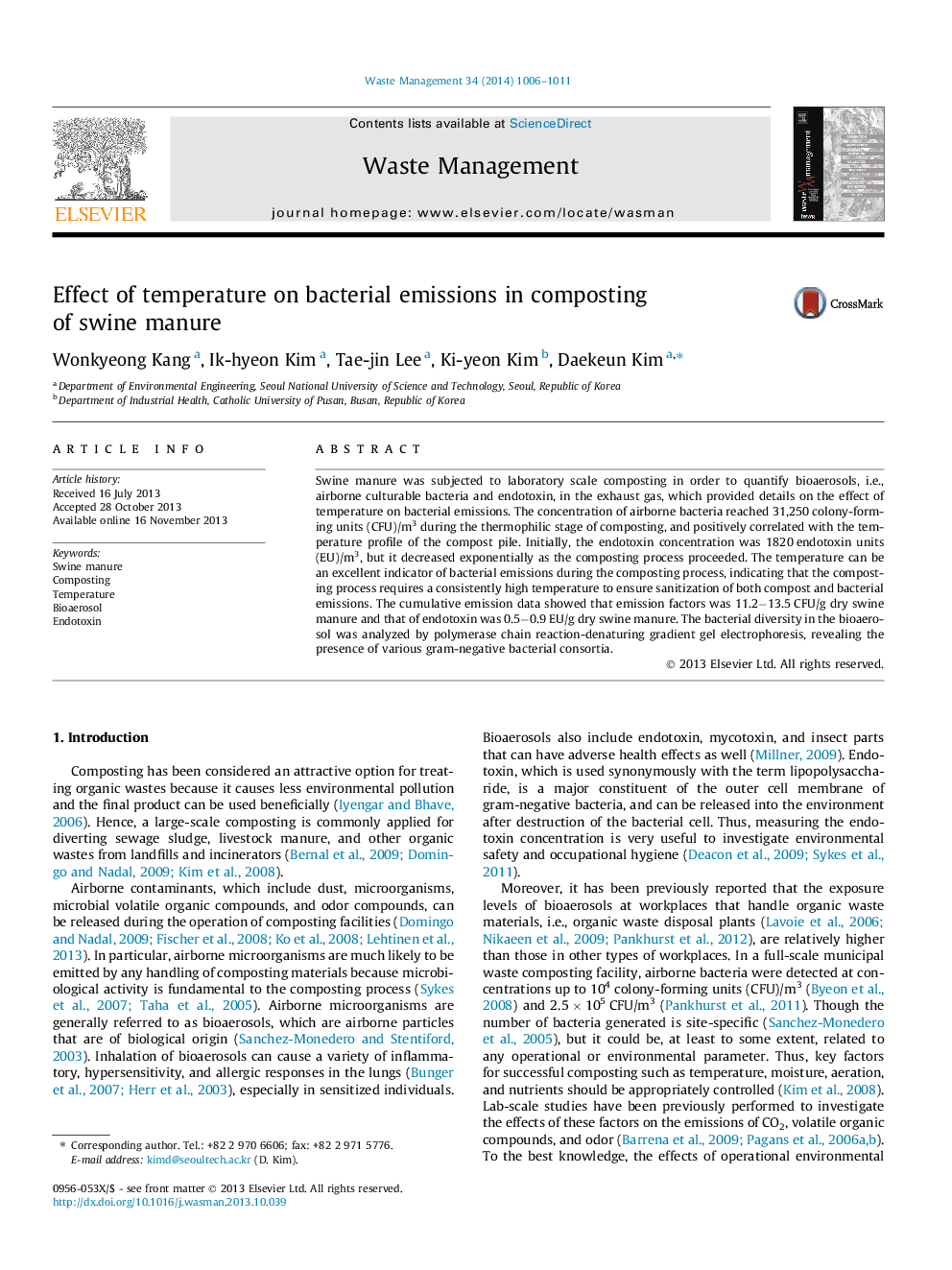| Article ID | Journal | Published Year | Pages | File Type |
|---|---|---|---|---|
| 4471621 | Waste Management | 2014 | 6 Pages |
•Temperature dependence on bacterial emissions from swine manure composting.•11.2–13.5 CFU and 0.5–0.9 EU per a gram of dry swine manure as emission factors.•Gram-negative bacterial consortia are predominantly present in airborne bacteria.
Swine manure was subjected to laboratory scale composting in order to quantify bioaerosols, i.e., airborne culturable bacteria and endotoxin, in the exhaust gas, which provided details on the effect of temperature on bacterial emissions. The concentration of airborne bacteria reached 31,250 colony-forming units (CFU)/m3 during the thermophilic stage of composting, and positively correlated with the temperature profile of the compost pile. Initially, the endotoxin concentration was 1820 endotoxin units (EU)/m3, but it decreased exponentially as the composting process proceeded. The temperature can be an excellent indicator of bacterial emissions during the composting process, indicating that the composting process requires a consistently high temperature to ensure sanitization of both compost and bacterial emissions. The cumulative emission data showed that emission factors was 11.2−13.5 CFU/g dry swine manure and that of endotoxin was 0.5−0.9 EU/g dry swine manure. The bacterial diversity in the bioaerosol was analyzed by polymerase chain reaction-denaturing gradient gel electrophoresis, revealing the presence of various gram-negative bacterial consortia.
